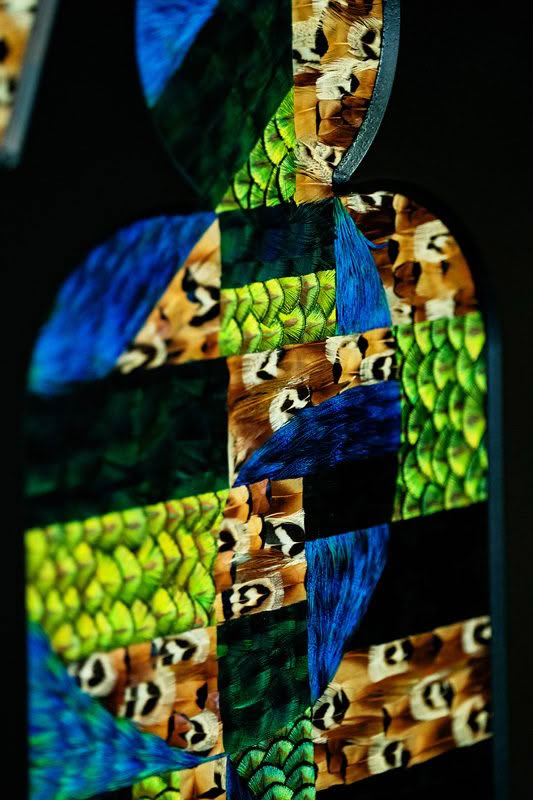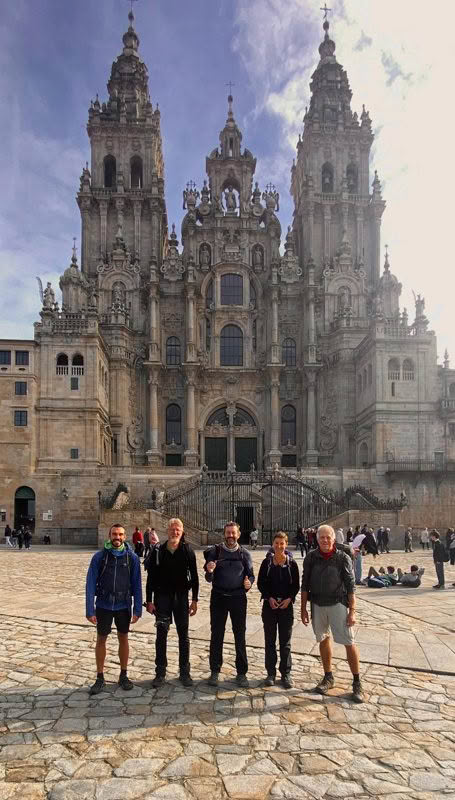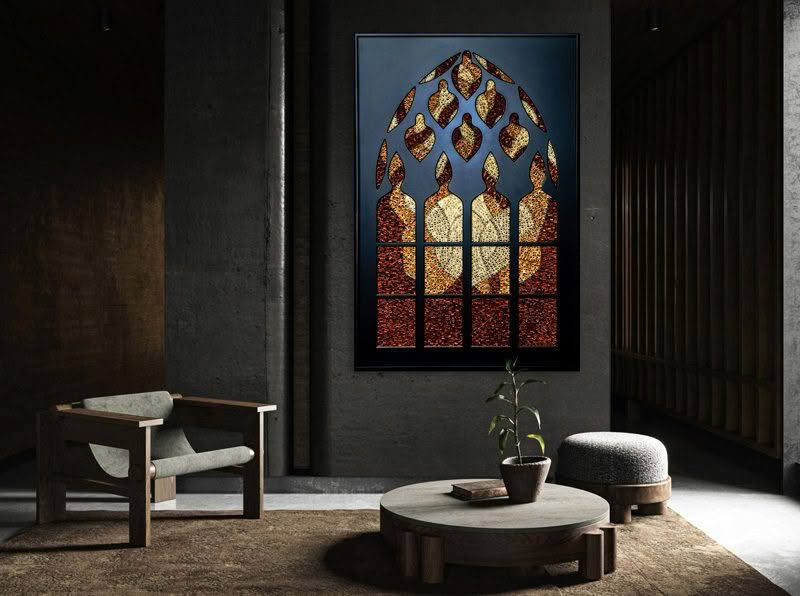A tapestry of feathers

A detailed look at Saint-Côme-d’Olt.
Standing in front of a piece of art by Fiona Kerr Gedson is a captivating experience. Her artworks are complex, detailed and consuming. Where at first glance they appear to be blocks of colour, a closer inspection reveals the texture and layers of the individual feathers that have been used to create them.
Words Lucinda Diack
Described as meditative, Fiona Kerr Gedson’s art is, in my opinion, simply magical. Fiona talks about her work as ‘the geometry of human connection’; each one meticulously crafted to be an expression of her stages of life. ‘I remember being enamoured with patterns as a child; in wallpapers or speaker covers, or tiled ceilings,’ she explains. Within her work the repetitive patterns are intended to soothe, while there is enough complexity to hold interest and attention. And that is without delving into the hidden delight, on closer inspection, of discovering they are comprised of feathers.
Fiona’s work reflects and honours the things most important to her – her family, her spirituality, shared experiences and a sense of kotahitanga (unity). Her most recent collection, Pilgrimage, is the embodiment of this.
Several years ago, when the last of her four children – whom she lovingly describes as ‘her best co-creations ever’ – left home, Fiona found herself in an empty house. ‘Initially it was amazing,’ she laughs. ‘It was my first taste of freedom – I had been a mum from a very young age.’ But over time that novelty wore off. Fiona became disillusioned with the broader world we found ourselves in, in 2022, and she realised that the everyday feeling of purpose, while bringing her children up, was gone. ‘I was at a loss and needed a complete change of scene.’
A lover of the outdoors and exploring nature on foot, Fiona made the decision to fulfil a dream that had been bubbling away under the surface for a while: to walk a Camino de Santiago – networks of pilgrimages leading to the shrine of the apostle James in the Cathedral of Santiago de Compostela in Northwestern Spain.
Choosing to start in Le Puy-en-Velay in Southern France made it a 1,500-kilometre journey for Fiona. She is enthusiastic in her description of finding ‘solace amidst the stunning landscapes’ and the ‘profound moments of entering the sanctum of each chapel or cathedral along the way’ were made all the more potent for having been outside all day.
‘I was particularly captivated by the patterned stained-glass windows,’ she says. ‘The beauty within their intricacies. Looking at them I could see how I could translate them into my feather works.’
Three weeks into the pilgrimage Fiona received devastating news; her father had unexpectedly passed away. ‘What to do?’ she reflects. ‘My brother told me to walk it out, so I did. I just walked.’

Fiona (pictured fourth from the left) outside the Cathedral of Santiago de Compostela – having walked 1,500 kilometres to get there.
The emotions connected to this experience sit close to the surface and are evident in the beautiful way Fiona describes those she encountered on the pilgrimage, and the strength she drew from them. ‘Those people, their support and their stories are just as much a part of this series of work as my experience, and Dad are.’
Returning home to Ōpōtiki, Fiona knew there was a body of work in her journey, but battled with the emotions connected to it. ‘It took some time to gather myself. It was hard to settle, I longed for my Camino community,’ she describes. ‘Focusing on the work did help me to process all that I had been through over there. Losing Dad, being away from my family, and even the physical exhaustion of walking for eight and a half weeks.’
Exploring themes of resilience, spirituality and personal growth, the body of work includes five large-scale and six smaller pieces, each one taking a number of weeks to complete.
Unlike her previous circular mandala pieces where she works from the outside in, each of these required a deeper level of detailed planning and meticulous execution. ‘For these, with the feathers layered in different directions, I had to think several steps ahead while creating them – as once the feathers are down, it’s a messy business to remove them.’
The intricate featherwork Fiona creates is inspired by kahu huruhuru, traditional Māori feather cloaks, and is testament to a culture she has been influenced by, living most of her life in the Eastern Bay of Plenty. Her children whakapapa to Te Whakatōhea through their father’s lineage.

Estaing
Using feathers from introduced birds such as turkeys, pheasants and peacocks, Fiona is ‘gifted’ carcasses from local farmers. ‘Peacocks are prolific around Ōpōtiki and are considered pests,’ Fiona laughs as she explains, ‘so sometimes the less glamourous side of my job is skinning the birds, otherwise I source my feathers from Dave Barrett in Whakatāne.’ Whose pelt and feather business Feathergirl has been recognised for its environmental work towards pest control without poison.
Each large piece is comprised of thousands of feathers glued into patterns. Following the stencilled guidelines from the pre-cut panels in the case of this work, the feathers are placed with tweezers and there is little to no room for error.
‘Of course, I was limited by the hues and tones of feathers to represent the windows. The framing of the large work is exquisite, thanks to Greig from Nevill Studios in Dunedin; his workmanship elevates mine. I’m happy with them and each one speaks to my time on the Camino,’ concludes Fiona.
Everyone sees something different in art and experiences it in a personal way. For Fiona this collection is very close to her heart and symbolic of a pivotal time in her life.
‘My wish is for people to find their own connections to the work now. I’ve been holding them for a long time – the exhibition was postponed so that I could complete four large commissions for The Greenhouse, Ockham’s new residential apartment build in Ponsonby, Auckland. So, with the show now open, with relief and satisfaction, I feel like my Camino is finally complete.’
Fiona’s Pilgrimage collection is available for viewing and purchase from Queenstown’s Artbay Gallery. fionakerrgedson.com

